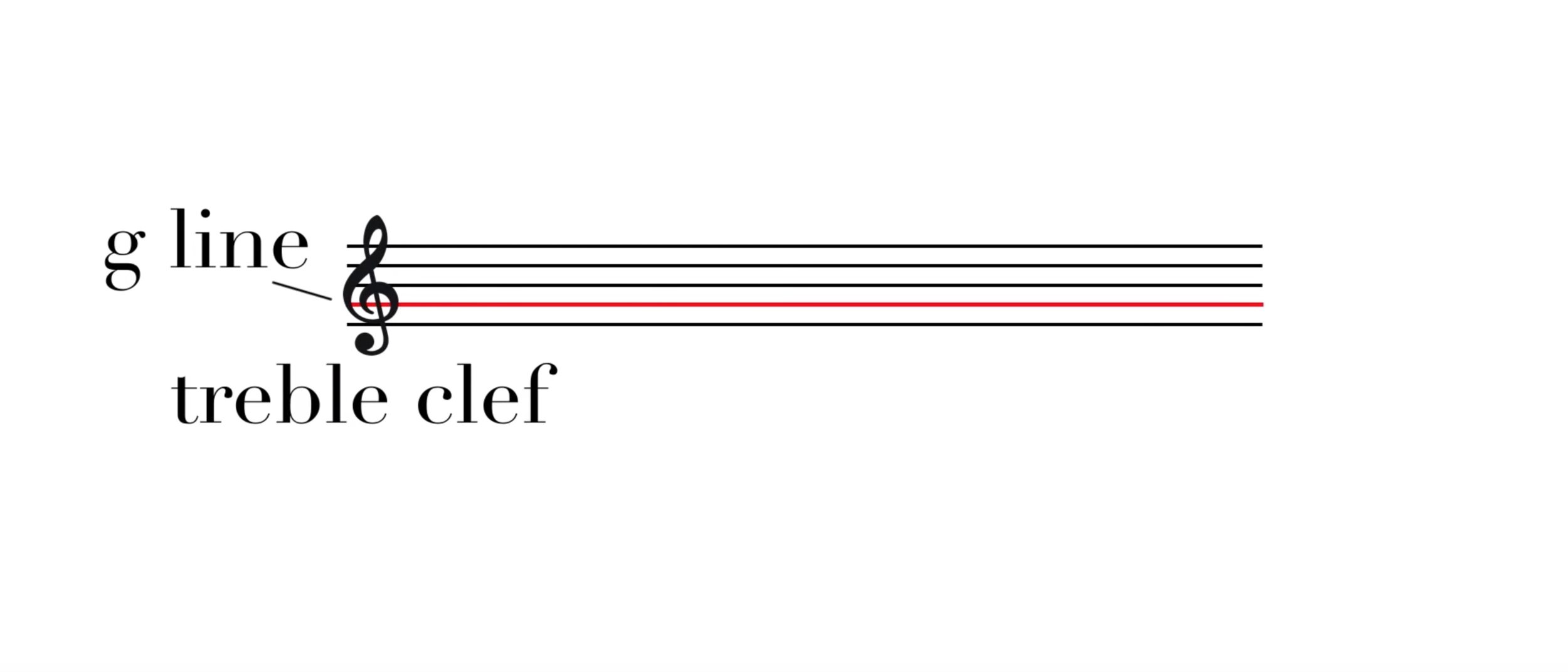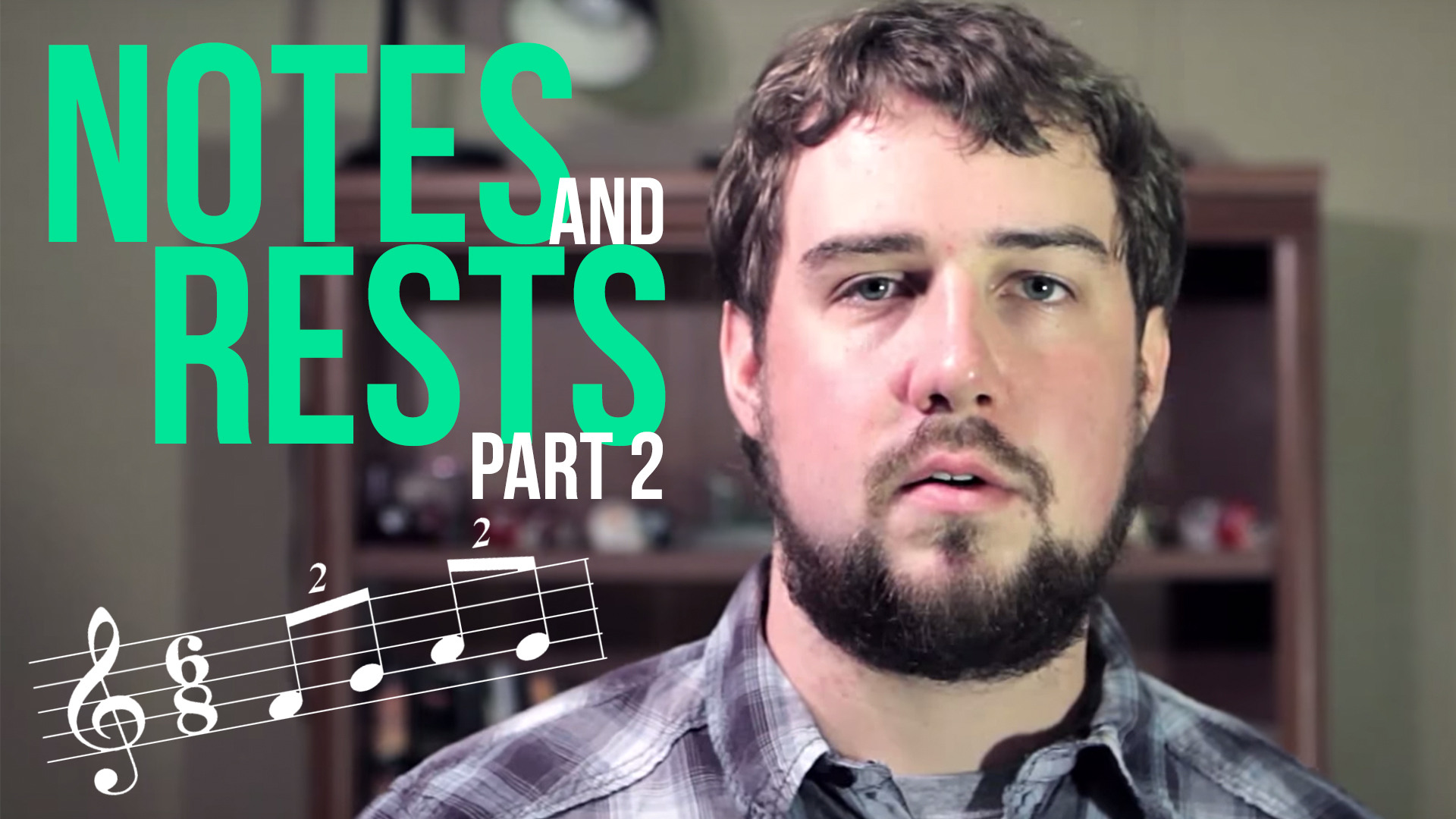How Do Clefs Work?
Today we are going to look at the different types of clefs and how to read them.
As I said last time, a clef is a symbol that indicates how to read a particular staff. The lines and spaces each represent a note, and the clef tells us which ones. The lines and spaces can continue above and below the staff as necessary. We call these Ledger lines.
There are three basic clefs that are used in modern music: The G, F and C clefs.
Now, you may be asking: why do we need different clefs?
The main purpose of the clef is to make reading easier for instruments and voices of different range. We want as many notes as possible on the staff and not above or below the staff. For example, a soprano sings much higher than a bass. The notes they both sing cannot fit on the same staff. Therefore, their parts are written on the Treble and Bass clefs, respectively.
G Clefs
These are by far the most common clefs in modern music. The treble clef is called a G clef, because the G line passes through the curl of the clef. That way we can read the clef based on that knowledge. The lines of a treble clef are (from bottom to top) E, G, B, D, and F. Commonly referred to by the acronym Every Good Boy Does Fine. The letters of the spaces spell out FACE, hence the pneumonic device “Face is in the space”.
Clefs are moveable on the staff, which means that if I was to lower the G clef down one line, the G would now be the bottom line of the clef. These clefs are very rarely used. There is one commonly used variation to the treble clef. Primarily used for the tenor voice, some treble clefs may be seen with a subscript 8. This indicates that the clef is to be read an octave lower than written.
F Clefs
The only F Clef used in modern music is for the bass clef. Much like the G clef, the F clef indicates where the F line lies on the staff. The two dots of the clef are on either side of the F line. This is more commonly known as the bass clef. The lines for this clef are G, B, D, F, and A. I like to remember it by Great Big Dogs Fight Animals. However, a lot of people remember it as Good Boys Do Fine Always. The spaces are A, C, E, and G, or All Cows Eat Grass, or All Cars Eat Gas, whichever you prefer.
The Grand Staff
When the Treble and bass clef are written at the same time, connected by a bracket, we call this the Grand Staff. This is used for keyboard instruments: Piano, harpsichord, organ, etc. There is no difference in how to read the clefs when they are laid out this way. There is however, some overlapping notes. For example, Middle C is written here on the bass clef and here on the treble clef.
C Clefs
And finally, just as a point of interest for most people, the C clef. If you are a viola player, however, you may want to take note. The C Clef, as you might could guess, tells us where the C line is. In the Alto clef, which is used primarily by violists, the C line is the middle line.
Therefore, the lines (from bottom to top) are F, A, C, E, and G. The spaces, therefore, are G, B, D, and F. I personally have never heard any pneumonic devices for alto clef, however, the internet suggests “Fat Animals Call Elephants Gorgeous” for the lines and “Good Boys Don’t Fight”; for the spaces. If that helps, awesome. If not, sorry, that’s all I’ve got.
Conclusion
Much like learning to read written language, this will take a good deal of time. Honestly, the best way to get really good at it is immersion. Just read in a clef and read and read until you become fluent in that clef.
So, that’s the basics of clefs. If you have any questions, please mention them in the comments.










